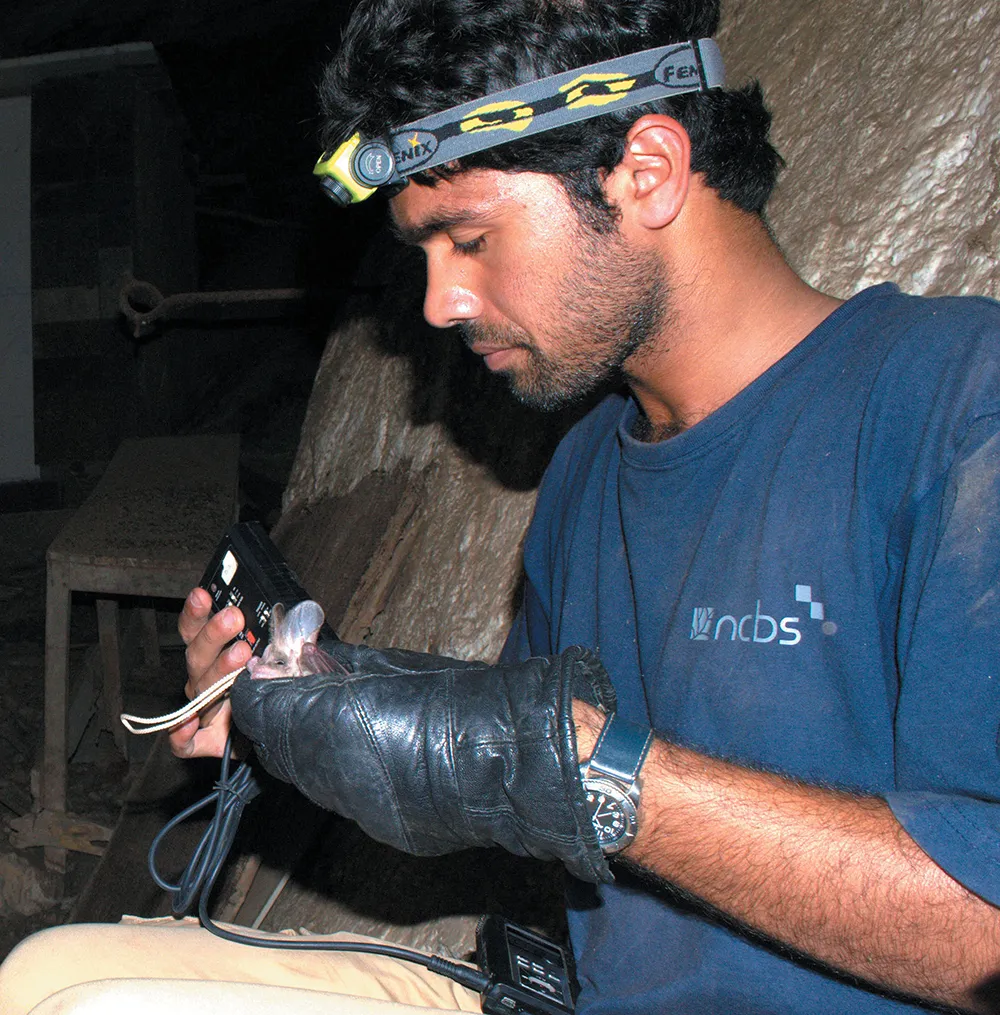
Rohit Chakravarty examines a greater false vampire bat (Lyroderma lyra) that was caught in a temple in in Ramanagara, Karnataka, India.

Rohit Chakravarty examines a greater false vampire bat (Lyroderma lyra) that was caught in a temple in in Ramanagara, Karnataka, India.
Photo: Kaushal Patel, Ph.D.
Protecting Bats in India
BCI’s India Program Manager, Rohit Chakravarty, shares his work and goals
By Annika Hipple
R
ohit Chakravarty’s interest in wildlife dates back to his childhood in central India, the country’s tiger capital. As a boy, he was fascinated by tigers, and his focus gradually expanded to include birds and bats. Now based in Bangalore, Rohit has studied bats for over a decade and leads Bat Conservation International (BCI)’s India Endangered Species Initiative in partnership with a local organization, Nature Conservation Foundation.
How did you become interested in bats?
Once I opened my dustbin to find a small orange bat called a short-nosed fruit bat (Cynopterus sphinx) stuck inside. I’ve always been fascinated by bats that were very hard to see, and when this bat came to me, I realized it was a gentle animal, not something to be scared of. During my bachelor’s in Mumbai, I started exploring caves, and that interest kept getting stronger. After that, my master’s, my Ph.D. thesis—everything was about bats.

Chakravarty removes a Schneider’s leaf-nosed bat (Hipposideros speoris) from a mist net in Kolar, Karnataka, India.
Photo: Malaika Vaz
What are your goals for BCI’s new India program?
The main objective is to prepare a conservation plan that will be a road map for researchers, conservationists, and possibly even policymakers in the future. It will contain input about globally relevant conservation issues like wind, energy, light, and pollution. We also have ongoing projects about how wind energy and urbanization impact bats in India. We have a lot of Endangered species to study, including the Salim Ali’s fruit bat (Latidens salimalii), which is endemic to a very small portion of the Western Ghats region at slightly higher elevations. We’re trying to find out more about what this bat does and how we can use science to conserve it. Because there isn’t much funding support for studying bats, there are very few bat researchers in university positions or conservation organizations, so that’s a niche that I’m trying to build as well.
Do you have any other plans in the works?
Another major project we plan to start is about bats living in archaeological sites. We have a lot of monuments that bats have occupied, and the Archaeological Survey of India (ASI), which manages these sites, is not always friendly towards them because they either damage the monuments or deter tourists from visiting. These are sites where nature is getting conserved under the umbrella of cultural heritage, and we want to understand how we can help the ASI manage conflict situations while keeping these habitats safe for bats.
Do you have a favorite Indian bat?
One of my favorites is a Himalayan bat called the bronze sprite (Arielulus circumdatus). It’s a beautiful bat with a nice maroon tinge, and the tip of the hair is black. I like that bat for its color and because it’s sort of rare. Another really cute one is the long-eared bat (Plecotus homochrous), which has very large ears that almost cover the entire body.